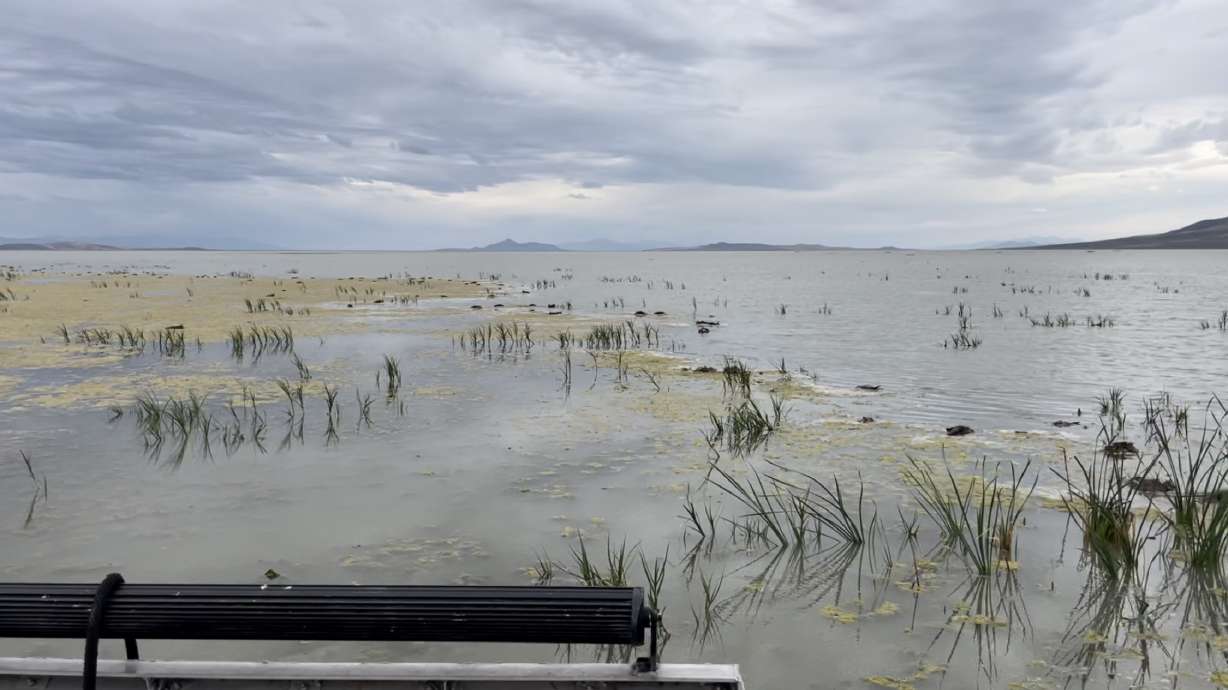Estimated read time: 4-5 minutes
This archived news story is available only for your personal, non-commercial use. Information in the story may be outdated or superseded by additional information. Reading or replaying the story in its archived form does not constitute a republication of the story.
BRIGHAM CITY — A string of recent waterfowl deaths in Utah are believed to be caused by an avian botulism outbreak, prompting state wildlife officials to issue a safety reminder to hunters Thursday ahead of this year's hunt beginning this weekend in northern Utah.
Utah Division of Wildlife Resources officials say the suspected outbreak is believed to have impacted "tens of thousands" of birds along the Bear River and Willard bays, including the Harold Crane and Willard Spur waterfowl management areas by the Great Salt Lake's northeast corner. They don't have an exact number of deaths because of the "particularly large number of birds" involved.
A short video released by wildlife biologists shows multiple dead birds in the region's wetlands. While avian botulism cases tend to pop up on a fairly regular basis, especially in wetlands near the Great Salt Lake, Faith Heaton Jolley, a spokeswoman for the Utah Division of Wildlife Resources, said this case was large enough that the division wanted to warn hunters.
"Obviously, it's alarming anytime you're seeing large, large numbers of dead animals," she told KSL.com. "Just the sheer quantity was kind of what caught (wildlife managers') attention."
The region where the dead birds were found is known for attracting millions of migratory birds every year. State wildlife biologists and land managers first spotted dead and sick birds while touring both the Willard Spur and Harold Crane waterfowl management areas by Willard Bay in Box Elder County during tours of both areas in mid-September.
Managers tour the area on a regular basis to check on conditions, but the division had also started to receive reports from visitors about dead birds near the Willard Bay shore about the same time the birds were discovered, Jolley said.
Several of these birds were collected, where they came back negative for highly pathogenic avian influenza — an outbreak that has impacted many bird species across the U.S. since it was first noticed at the start of 2022. The negative tests led biologists to believe the birds died of avian botulism instead, though final tests are still pending, wildlife officials said.
Avian botulism typically occurs when low oxygen levels and warm water temperatures in a body of water produce Clostridium botulinum during the summer and fall, which is often fatal when a bird consumes it, state wildlife officials explained. Avian outbreaks usually don't lead to human illness, though.
Jolley said biologists also suspected botulism early on because of the behavior they observed in some of the live birds. The two biggest signs are that a bird struggles to hold its head up or it flaps its wings, but it doesn't have the strength to fly. She adds that duck species have been the most impacted in this case.
In a statement, Jason Jones, the division's waterfowl coordinator, said wetland managers "strive to make adjustments" to water flow in areas to help minimize the impacts when botulism develops. In fact, he said many of the state's waterfowl management areas were designed to reduce botulism outbreaks that plagued river deltas about a century ago.
Thursday's update comes after the division issued a reminder to hunters earlier this week to look out for harmful algal blooms while out on the hunt. Algal bloom advisories remained in place at two dozen bodies of water across Utah at the start of this week.
"(Hunters) should just be aware of some of these incidents going on right now and know what to look for," Jolley said, noting that pets are the most at risk for both algal blooms and avian botulism. "Dogs are a big component of waterfowl hunting ... so (we're) making sure hunters are aware, so they can keep their dogs away if they are in one of these areas that have some of these sick or dead birds."
With with suspected avian botulism outbreak, they are also asking hunters to take extra precautions if they encounter sick or dead birds:
- Do not touch sick birds and don't try to catch them and do not feed them. Keep a safe distance away to avoid stressing them further.
- While the risk of avian botulism transmitting to humans is low, hunters should only harvest waterfowl that are actively flying, as this means the birds are likely healthy.
- Do not harvest or consume birds that appear sick or weak if possible. Heat will denature the toxin, so cook meat thoroughly.
- Keep your dogs away from sick, dead or dying birds, as botulism can affect dogs if they consume the meat.
Correction: Utah wildlife officials initially said the outbreak included spots within the Bear River Migratory Bird Refuge. They later clarified the outbreak included spots in Bear River Bay.










